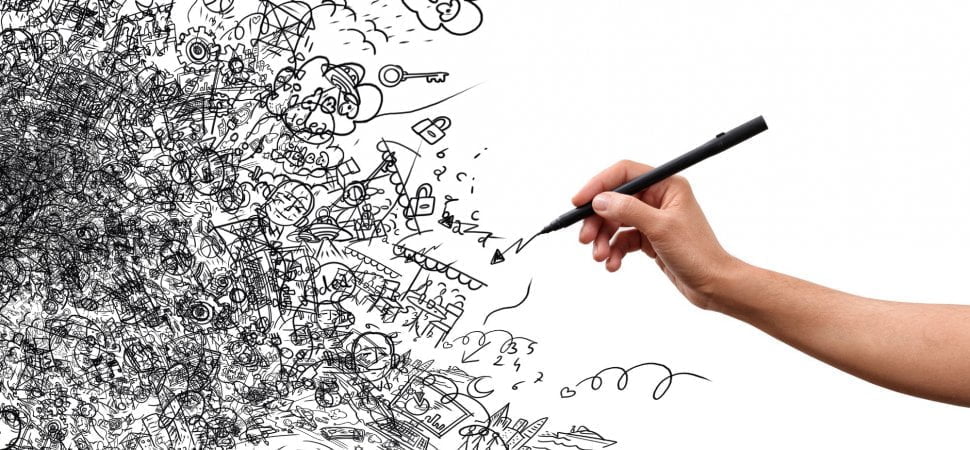
I recently glanced down at the yellow pad of the senior executive sitting next to me at an off-site I was facilitating. The intricate pattern of squiggles, squares, circles and curlycues told me he was either bored out of his mind, or working something out.
According to some new research, his doodles were more than likely his way of relaxing his brain, while focusing at the same time.
Doodling rewards your brain.
According to a new Drexel University study our brains’ reward pathways become active during art-making activities like doodling.
Girija Kaimal, EdD, an assistant professor in the College of Nursing and Health Professions, led a team that measured blood flow in the areas of the brain related to rewards while studying participants who completed a variety of art-making projects. Here’s what she found.
It was noted and tracked which participants in the study considered themselves artists so that their results could be compared to those of non-artists. In that way, Kaimal and her team hoped to understand whether past experience played a factor in triggering feelings of reward.
For the study, coauthored by Drexel faculty including Jennifer Nasser, PhD, and Hasan Ayaz, PhD, 26 participants wore fNIRS headbands while they completed three different art activities (each with rest periods between).
For three minutes each, the participants colored in a mandala, doodled within or around a circle marked on a paper, and had a free-drawing session.
During all three activities, there was a measured increase in blood flow in the brain’s prefrontal cortex, compared to rest periods, where blood flow decreased to normal rates.
Artists and non-artists both benefit.
As for the results, doodling seemed to initiate the most brain activity in artists, but free-drawing was observed to be about the same for artists and non-artists. Interestingly, the set coloring activity resulted in negative brain activity in artists.
However, these results regarding artists versus non-artists proved statistically insignificant, which tracks with Kaimal’s previous research that found experience level did not have a bearing on the stress-reduction benefits people had while making art.
“This shows that there might be inherent pleasure in doing art activities independent of the end results.” said Kaimal.
Doodle your way to problem solving.
The prefrontal cortex is related to regulating thoughts, feelings and actions as well as emotional and motivational systems. Hence seeing increased blood flow in these areas likely means a person is experiencing feels related to being rewarded.
In fact, in surveys administered to the participants after the activities were complete, respondents indicated that they felt more like they had “good ideas” and could “solve problems” than before the activities. Participants even said they felt the three-minute time spans for art-making were not long enough.
The next time you run a meeting, you might consider asking your people to put down their cell phones and pick up some colored pencils and paper — and have at it. Who knows? Their creative curlycues might just lead to the breakthrough idea you’ve been looking for.
